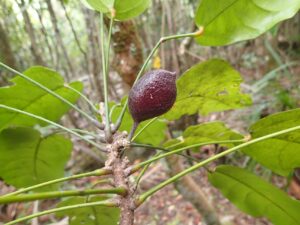How to Propagate Acropogon schumanniana

Propagating Acropogon schumanniana: Challenges and Rewards
Acropogon schumanniana, while lacking a widely known common name, is a fascinating plant that merits attention from horticultural enthusiasts. Its distinctive features (which would need further specification based on the plant’s actual characteristics – it’s not a species currently widely indexed in common databases) make it a sought-after addition to specialized collections. Its popularity amongst gardeners, however, is likely limited due to the relative scarcity of information and the potential propagation challenges. This article explores the various methods of propagation, outlining the challenges and rewards involved.
Seed Germination:
Currently, there are no known reliable methods for seed germination propagation of Acropogon schumanniana. This lack of information may be due to the plant’s rarity, limited seed production, or dormancy mechanisms yet to be understood. Further research, including investigations into the plant’s reproductive biology, would be necessary to determine the feasibility of seed propagation.
Cuttings:
Propagating Acropogon schumanniana via cuttings presents a more promising avenue, though still fraught with challenges. The success rate will likely depend significantly on the type of cutting used (e.g., stem cuttings, nodal cuttings) and the environmental conditions.
-
Challenges: The precise requirements for successful rooting are unknown. Factors such as the age of the cuttings, the use of rooting hormones, humidity levels, temperature, and the type of rooting medium all need careful experimentation to optimize success. A slow rooting rate is likely.
-
Practical Tips: Experiments with different rooting hormones (such as IBA or NAA), mist propagation systems to maintain high humidity, and bottom heat to stimulate root development are recommended. Using a well-draining substrate, such as a perlite and peat moss mix, would be advisable.
- Rewards: Cuttings, if successful, allow for relatively quick multiplication compared to other methods, preserving the genetic characteristics of the parent plant.
Division:
Division, where the plant is separated into smaller portions, each containing roots and stems, is another possibility, but likely only feasible once the plant has reached a significant size.
-
Challenges: The root system of Acropogon schumanniana might be delicate, making division challenging. Improper division could lead to plant death. The timing of division is also crucial and likely needs to align with the plant’s growth cycle.
-
Practical Tips: Careful handling during separation is essential. Ensure that each division possesses a sufficient root system and healthy stems to ensure survival. Planting each division in a suitable potting mix and providing appropriate aftercare is crucial.
- Rewards: Division offers a relatively straightforward method for increasing the number of plants, particularly advantageous when a mature individual is available.
Tissue Culture:
Tissue culture offers the potential for large-scale propagation and the production of disease-free plants. However, this technique requires specialized equipment and expertise.
-
Challenges: Establishing a protocol for Acropogon schumanniana requires extensive research and experimentation. The optimal growth medium, the appropriate plant hormones, and the sterilization procedures must all be carefully determined.
-
Practical Tips: Collaboration with tissue culture laboratories experienced in propagation of similar species could prove invaluable. The selection of appropriate explants (tissue samples) and the optimization of culture conditions are crucial.
- Rewards: Once a successful protocol is established, tissue culture allows for rapid multiplication, the elimination of diseases, and the potential for genetic improvement through techniques such as somatic embryogenesis.
Conclusion:
Propagating Acropogon schumanniana presents a unique set of challenges, varying across different methods. Seed germination appears currently infeasible. Cuttings hold some promise, but success is contingent on careful experimentation and optimization of conditions. Division might be possible for larger plants but requires careful handling. Tissue culture offers the greatest potential for large-scale propagation but demands specialized knowledge and resources.
The rewards, however, readily justify the effort. Successfully propagating this intriguing plant provides immense personal satisfaction, stemming from overcoming the inherent difficulties. The process underscores the patience and dedication needed in horticulture and ultimately contributes to the conservation and appreciation of this potentially rare and fascinating species. For aspiring propagators, meticulous observation, thorough record-keeping, and a spirit of experimentation are essential for eventual success. Remember that failures are learning opportunities on the path to mastering the art of cultivation.